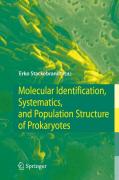
Molecular identification, systematics, and population structure of prokaryotes
Stackebrandt, Erko
Systematic biology has a far wider application than merely the provision of areliable classification scheme for new strains. With the framework of the hierarchic system stabilizing, genomes, noncoding regions, and genes and their products can now be evaluated in an evolutionary context. This book summarizes recent developments in the molecular characterization of cultured and as-yet uncultured prokaryotes, emphasizing the strengths and weaknesses of individual approaches. The chapters of the book are compiled to stimulate students to enter the field of bacterial diversity, presenting a broad spectrum of fascinatingmultifaceted disciplines that illuminate the paths to ecosystem functioning, communication within communities, symbiosis, life in extreme environments, astrobiology, and more. INDICE: Exciting Times: The Challenge to be a Bacterial Systematist.- DNA-DNA Reassociation Methods Applied to Microbial Taxonomy and Their Critical Evaluation.- DNA Fingerprinting Techniques Applied to the Identification, Taxonomy and Community Analysis of Prokaryotes.- Multiple Locus VNTR (Variable Numberof Tandem Repeat) Analysis.- Bacterial Phylogeny Reconstruction from Molecular Sequences.- Integrated Databasing and Analysis.- Assessment of Microbial Phylogenetic Diversity Based on Environmental Nucleic Acids.- Metagenome Analyses.- DNA Microarrays for Bacterial Genotyping.
- ISBN: 978-3-642-06214-8
- Editorial: Springer
- Encuadernacion: Rústica
- Fecha Publicación: 31/03/2012
- Nº Volúmenes: 1
- Idioma: Inglés
